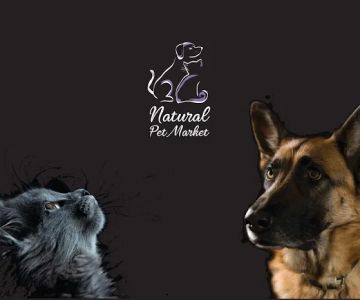Understanding Dog Skin Conditions
When I first noticed my dog, Max, scratching excessively and licking his paws all the time, I was concerned. It wasn’t just occasional; it was a constant issue. His skin appeared red and irritated, and he was clearly uncomfortable. As a pet owner, watching my dog suffer was hard, and I knew I had to find a solution. After visiting the vet, I was told that Max had a mild case of allergies, which was causing his skin issues. But instead of relying solely on prescription medications, I wanted to explore natural remedies that could provide relief without causing any additional side effects.
Many dog owners face similar skin problems with their pets. From itching and rashes to more serious conditions like eczema and hot spots, skin issues in dogs are common and can be caused by a variety of factors, such as allergies, infections, or dry skin. While prescription treatments can be effective, natural remedies can often provide a gentle, holistic approach to helping your dog’s skin heal. In this article, I’ll share the natural remedies I’ve used to help Max with his skin conditions and how you can apply them to your dog’s care routine.
1. Identify the Cause of Your Dog’s Skin Condition
The first step in treating any skin condition is understanding the underlying cause. Max’s skin issues were primarily caused by seasonal allergies, which made his skin itchy and inflamed. It’s important to identify whether your dog’s skin condition is due to allergies, infections, dryness, or something else entirely. A visit to the vet can help rule out any serious conditions and give you a starting point for treatment. For example, if your dog is experiencing a fungal or bacterial infection, you may need a more targeted treatment, whereas allergies may respond well to natural remedies.
For Max, I noticed that his symptoms would worsen during certain seasons, particularly in the spring and fall when pollen levels were high. His scratching and licking were signs that his body was reacting to the allergens in the environment. If your dog’s skin issues seem to flare up at certain times of the year, it could be allergy-related, and natural remedies like oatmeal baths or essential oils can help soothe the skin.
2. Oatmeal Baths: A Soothing Solution
One of the first natural remedies I tried for Max was an oatmeal bath. Oatmeal is known for its soothing properties, and it’s often recommended for human skin conditions like eczema or rashes. It turns out, it works just as well for dogs. Oatmeal has anti-inflammatory properties that can relieve itching and irritation. It also helps to restore moisture to dry, flaky skin, making it an excellent remedy for dogs who suffer from skin dryness.
2.1 How to Give Your Dog an Oatmeal Bath
Giving Max an oatmeal bath was easier than I thought. First, I ground plain, unflavored oatmeal into a fine powder and mixed it with warm water to create a soothing oatmeal paste. I applied the paste directly to his skin, focusing on the areas where he scratched the most. After letting it sit for a few minutes, I rinsed him off with clean water. If you prefer a more traditional bath, you can add ground oatmeal to your dog’s bath water and allow them to soak for 10-15 minutes.
2.2 Benefits of Oatmeal for Dogs
Not only did the oatmeal bath help reduce Max’s itching, but it also kept his skin moisturized, preventing the dryness that often comes with allergy flare-ups. It’s a gentle remedy that’s safe to use regularly and can provide immediate relief for dogs with inflamed or irritated skin. Plus, oatmeal baths are easy to do at home with ingredients you likely already have in your pantry.
3. Coconut Oil for Skin Hydration and Healing
Coconut oil is another natural remedy I used to help Max’s skin condition. Rich in fatty acids and antioxidants, coconut oil can be applied topically to moisturize and heal the skin. It also has antimicrobial properties, which can help with skin infections caused by bacteria or fungi. Max’s skin condition involved a lot of dryness, so using coconut oil was an ideal way to both hydrate his skin and prevent further irritation.
3.1 How to Use Coconut Oil on Dogs
To use coconut oil, I would take a small amount and rub it between my hands to warm it up. Then, I gently massaged the oil into Max’s coat, focusing on the areas where his skin was the driest or most irritated. I found that a little went a long way, and it didn’t take much to see the benefits. The coconut oil helped create a barrier that locked in moisture, soothing his skin throughout the day.
3.2 Additional Benefits of Coconut Oil
In addition to its moisturizing effects, coconut oil also has natural healing properties that can help improve your dog’s skin over time. It can reduce inflammation and redness, while also preventing infection by keeping harmful bacteria away from the affected areas. Max’s skin became noticeably softer and less irritated with regular use of coconut oil, making it one of my go-to natural remedies for his skin health.
4. Aloe Vera for Cooling Relief
Aloe vera is another excellent natural remedy for dog skin conditions. Its cooling properties make it a go-to option for soothing burns, cuts, and rashes. When Max had a particularly bad flare-up of his allergy-induced skin irritation, I turned to aloe vera gel to provide instant relief. Aloe vera helps reduce inflammation and has a cooling effect that can immediately soothe itchy skin.
4.1 How to Apply Aloe Vera to Dog Skin
I always used fresh aloe vera gel that I extracted directly from the plant, but you can also find pure aloe vera gel at pet stores or online. I would apply a small amount of the gel to the affected areas, ensuring that Max didn’t lick it off immediately (as this could lead to stomach upset). Aloe vera not only soothes the skin but also helps speed up the healing process, making it a great natural remedy for dogs with skin conditions that require long-term care.
4.2 Benefits of Aloe Vera
Aloe vera also has antimicrobial properties, which can be helpful for dogs with skin infections or wounds. It promotes the regeneration of healthy skin and can provide relief for dogs suffering from hot spots or rashes. Using aloe vera regularly on Max’s skin helped keep his skin calm and free from further irritation, especially during allergy season.
5. Essential Oils for Skin Healing
Essential oils can be an effective natural remedy for dogs with skin conditions, but they must be used carefully. Some essential oils can be toxic to dogs, so it’s important to choose pet-safe oils and dilute them properly. I used lavender and chamomile oils to help calm Max’s skin and reduce his itching. Both of these oils are known for their soothing and healing properties.
5.1 How to Use Essential Oils Safely on Dogs
To use essential oils on Max, I would dilute the oil in a carrier oil, such as coconut oil or olive oil, to ensure it was safe for his skin. I would mix a few drops of lavender or chamomile essential oil into a tablespoon of carrier oil and gently massage it into his coat. This mixture helped reduce Max’s itching and had a calming effect on his skin. Always check with your veterinarian before using any essential oils on your dog, as not all oils are safe for pets.
5.2 Essential Oil Benefits
Lavender and chamomile oils have anti-inflammatory and antimicrobial properties, which make them great choices for soothing irritated skin. They can also help calm your dog if the skin condition is related to anxiety or stress, offering both physical and emotional relief. Regular use of diluted essential oils helped Max stay comfortable and supported the healing process for his skin.
6. Diet and Supplements for Healthy Skin
What Max eats also plays a role in the health of his skin. I started giving him a diet rich in omega-3 fatty acids, which are known to support healthy skin and coat. Omega-3s help reduce inflammation and promote healthy cell growth, making them essential for dogs with skin conditions. I added fish oil supplements to his meals, which improved his overall skin health.
6.1 Omega-3 Fatty Acids and Skin Health
Omega-3 fatty acids are often recommended by veterinarians for dogs with allergies, hot spots, and other skin conditions. They help reduce inflammation and improve the quality of your dog’s coat. Max’s skin improved over time with the addition of these fatty acids, and he became less prone to dryness and irritation. I also made sure to feed him a balanced diet with high-quality protein to support his overall health.
6.2 Probiotics for Skin Healing
In addition to omega-3s, I introduced probiotics into Max’s diet. Probiotics help support the gut health of dogs, which in turn can support their skin health. Dogs with a healthy gut are less likely to experience skin flare-ups, as their immune system is better equipped to handle irritants and allergens. Probiotics have helped Max maintain a balanced gut and skin, contributing to his overall well-being.











